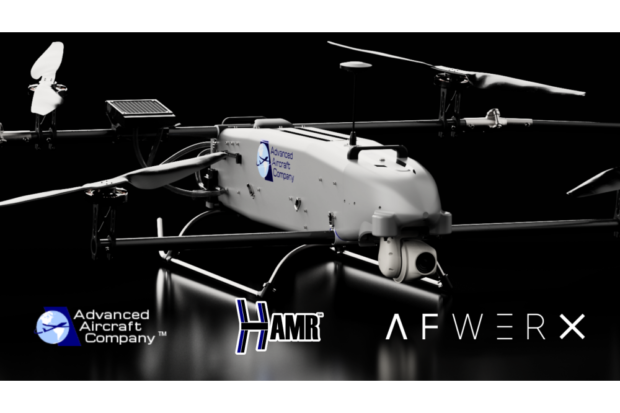, a manufacturer of distributed electric propulsion tilt-wing and multi-rotor uncrewed aircraft vehicles, has been selected by AFWERX for a Direct-to-Phase II contract in the amount of $1.25M focused on its Hybrid Advanced Multirotor Unmanned Aircraft System (HAMR) to address the most pressing challenges in the Department of the Air Force .
The Air Force Research Laboratory and AFWERX have partnered to streamline the Small Business Innovation Research and Small Business Technology Transfer process by accelerating the small business experience through faster proposal to award timelines, changing the pool of potential applicants by expanding opportunities to small business and eliminating bureaucratic overhead by continually implementing process improvement changes in contract execution. The DAF began offering the Open Topic SBIR/STTR program in 2018, which expanded the range of innovations the DAF funded, and now, Advanced Aircraft Company will continue its journey to create and provide innovative capabilities that will strengthen the national defense of the United States of America.
AAC is developing HAMR to support the USAF Agile Combat Employment concept of operations. ACE is an operational approach that combines proactive and reactive strategies, all of which are executed within defined threat timelines. The primary objective is to ensure that Airmen are well-prepared for potential contingencies. This readiness allows them to operate effectively from a range of locations, each with varying levels of capacity and support.
“We are excited to continue the development and testing of HAMR with the support of the AFWERX program,” said Paul Allen, Chief Executive Officer of AAC. “This Direct-to-Phase II contract takes us one step further to providing our warfighters with an efficient and rugged uncrewed aircraft capable of conducting military support operations in austere environments. The Pivot to the Pacific is a massive focus for the US Department of Defense and we are proud to help our great nation in this endeavour.”
The HAMR UAV can be optimized for various defense applications and mission profiles, including long-endurance tactical ISR, perimeter security, search and rescue, and medical supply delivery missions. HAMR UAS also serves as a force multiplier, significantly increasing ISR capabilities relative to DoD’s incumbent tactical ISR UAS to better protect our warfighters.
The aircraft utilizes a distributed electric propulsion system incorporating an electronic fuel-injected and computer-controlled piston engine driving an integrated generator producing up to 4000W to power six independent brushless DC electric motors and a backup battery.
Bridging the gap between today’s Group 1 and Group 2 UAS capabilities, HAMR features a flight endurance of up to 3.5 hours – six times longer than a conventional battery-powered multirotor aircraft. Multiple redundant systems, remote in-flight engine starting, and onboard batteries ensure the aircraft can operate with a high margin of safety. In the event of an engine or electric motor failure, the craft can abort, maneuver away, and land safely without further incident. Additionally, an IP rating of 65 (IP65) ensures safe and reliable operation in challenging environments, including dusty and rainy conditions.
The aircraft employs line replaceable units (LRUs), ensuring rapid in-the-field servicing with minimal training and minimal operational downtime. A continuous development program lengthens aircraft service life and increases its capabilities as new technologies are integrated over time.
HAMR can carry twelve pounds of payload and features dual payload bays that offer versatile capabilities, such as accommodating multiple sensor payloads, increasing fuel capacity, or carrying air-droppable cargo. Thanks to its open modular architecture, operators can easily reconfigure the payload bays for specific application and mission requirements.
HAMR’s forward payload bay can integrate various standard Group 2 payloads suitable for defense applications, including electro-optical (EO) and infrared (IR) systems. The center payload bay can be configured with LIDAR, GPS-denied navigation, and communications systems. For extended-duration missions, there is the option to equip the bay with an additional fuel bladder, or two 2U SOCOM MOD double-stacked SIGINT payloads. Additionally, the center payload bay can facilitate cargo delivery operations. This flexibility ensures the HAMR is well-equipped for a wide range of tasks.
Additionally, the HAMR is highly portable and can be launched within minutes without needing ground support infrastructure. The aircraft can be disassembled, stored in a single case, and easily transported in a conventional small civilian or military vehicle.
Source: Press Release

